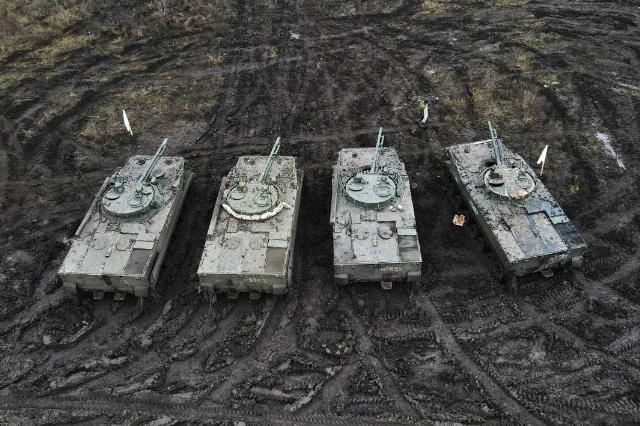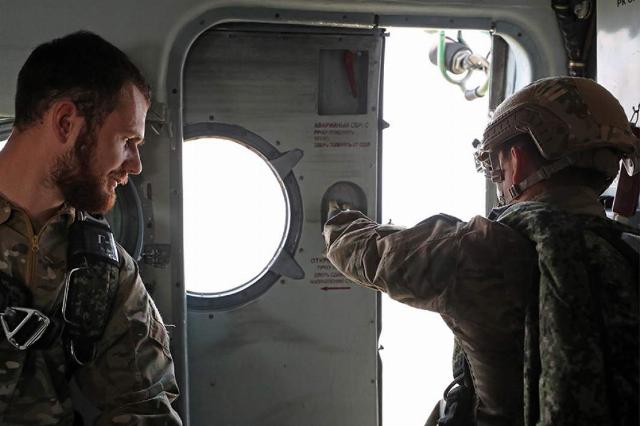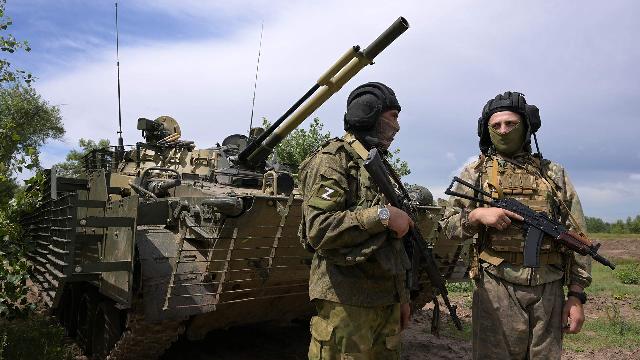New compounds are reinforced with BMP-3 combat vehicles
The Russian Ministry of Defense is strengthening the newly recreated amphibious units as part of the Ground Forces. Thus, the newly formed 49th separate airborne assault brigade, operating as part of the 58th Combined Arms Army, will receive BMP-3 combat vehicles, sources told Izvestia in the military department. This technique will provide good protection and firepower, it was not previously in service with paratroopers. The very appearance of such formations as part of the Ground Forces is dictated by the experience of a special military operation, experts say.
Armor for stormtroopers
The fleet of the 49th separate airborne assault brigade will be replenished with BMP-3 infantry fighting vehicles, sources told Izvestia in the Russian Defense Ministry. Such equipment can provide serious support in overcoming the enemy's fortified defenses, they stressed. Structurally, the 49th Brigade is part of the 58th Combined Arms Army. Its task is to storm fortifications on the front line, as well as helicopter landing behind enemy lines.
The experience of a special military operation leads to various structural changes in the Russian army. One of the most significant is the creation of specialized assault units. There were no such people in the Russian troops before. This innovation was dictated by the fact that from the first weeks of fighting, Russian troops faced powerful Ukrainian fortifications, especially in the Donbas, where they had been built since 2014. In addition, the troops faced another problem — an offensive in the classic way, with groups of armored vehicles supported by infantry, is fraught with heavy losses due to the presence of a large number of anti-tank weapons and attack drones from the enemy.

Photo: RIA Novosti/Sergey Pivovarov
Image source: iz.ru
In Soviet times, in addition to the airborne divisions subordinated to the command of the Airborne Forces, there were also airborne assault brigades that were part of the Ground Forces. They were supposed to operate in the offensive zone of motorized rifle and tank units. Among other things, this made it possible to keep amphibious units in the group of Soviet troops in Germany: according to existing agreements, units of the Soviet Airborne Forces were not stationed there. The amphibious assault brigades were registered in the Ground Forces, and their servicemen wore combined arms insignia. In the post-Soviet period, such formations were disbanded or transferred to the Airborne Troops.
— The return to Soviet methods proves that they are not outdated at all, and moreover, they are increasingly proving their viability and effectiveness, even in the current conditions. This was proved by a special military operation," Colonel Alexander Perendzhiev, associate professor at Plekhanov Russian University of Economics, told Izvestia. — An assault is not only an attack head—on or bypassing the enemy. An assault is also a landing in the rear in any way.
The expert noted that the Russian army has suitable helicopters for landing troops, which were widely used not only in Afghanistan, but also during the fighting in Chechnya and Syria.

Photo: TASS/Mikhail Tereshchenko
Image source: iz.ru
— Until we start landing behind enemy lines during a special military operation, it will go with a creak, — Alexander Perendzhiev is sure. — The slow progress is due precisely to the fact that we did not have these airborne assault brigades as part of the Ground Forces. I believe that this will significantly increase the effectiveness of our military operations.
He noted that helicopter landing can be used not only in the offensive, but also in active defense.
Earlier this year, the American Institute for the Study of War reported that the Russian command was preparing several amphibious assault formations to throw Ukrainian formations into the rear during the planned offensive. It was also reported that one such brigade, the 49th separate brigade, is already operating in the Zaporozhye direction as part of the 58th army.
The best in its class
The BMP-3, which will enter service with the 49th Brigade, is the most powerful and protected infantry fighting vehicle to date. Previously, she was not in service with paratroopers. According to its characteristics, it is closer to light tanks. The vehicle carries an impressive arsenal on board: a 100 mm 2A40 cannon, which also serves as an ATGM launcher, a 30 mm 2A42 automatic cannon, as well as three 7.62mm machine guns — two directional and one paired with a gun. In addition, the car has a good reservation, protecting it from bullets and shrapnel. Its predecessor, the BMP-2, is armed only with a 30 mm automatic cannon and a machine gun.
Photo: RIA Novosti/Stanislav Krasilnikov
Image source: iz.ru
— Now this is our main workhorse on the battlefield, which has proved itself very well, — military expert Vasily Dandykin told Izvestia. — The BMP-3 is a fairly heavy machine, by the way, floating. It has two guns. One is 100 mm, which can work on tanks, armored vehicles, fortified areas. And the second is a 30—mm automatic cannon that can work on infantry. And there are also machine guns. This is one of the best infantry fighting vehicles in the world. This is a suitable option for amphibious assault units.
The expert stressed that the BMP-3 can provide serious fire support to the actions of assault groups. In addition, the car practically combines elements of a tank, can give a ride to the troops, turn around and cover them.
Alexey Mikhailov
Roman Kretsul
Vladimir Matveev

